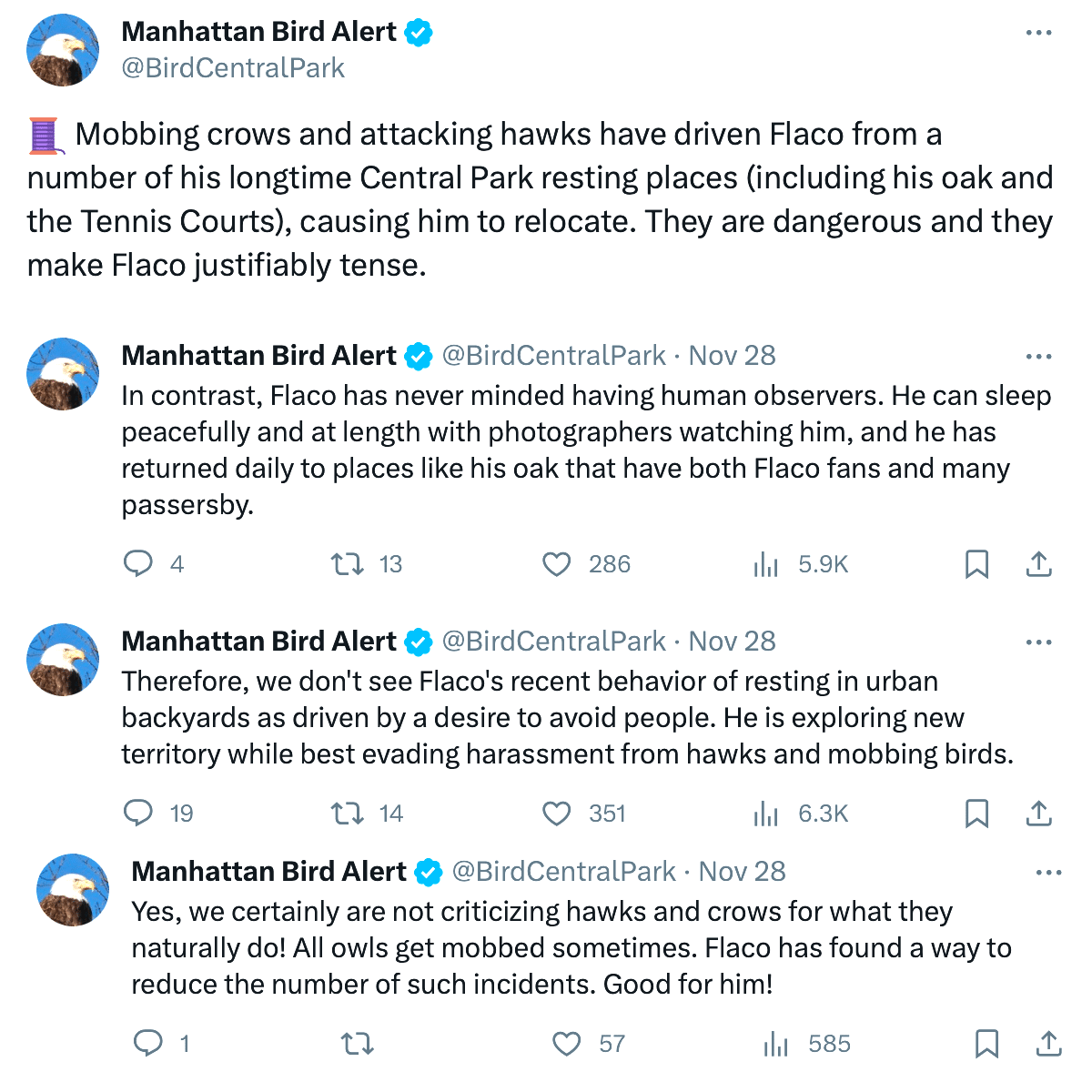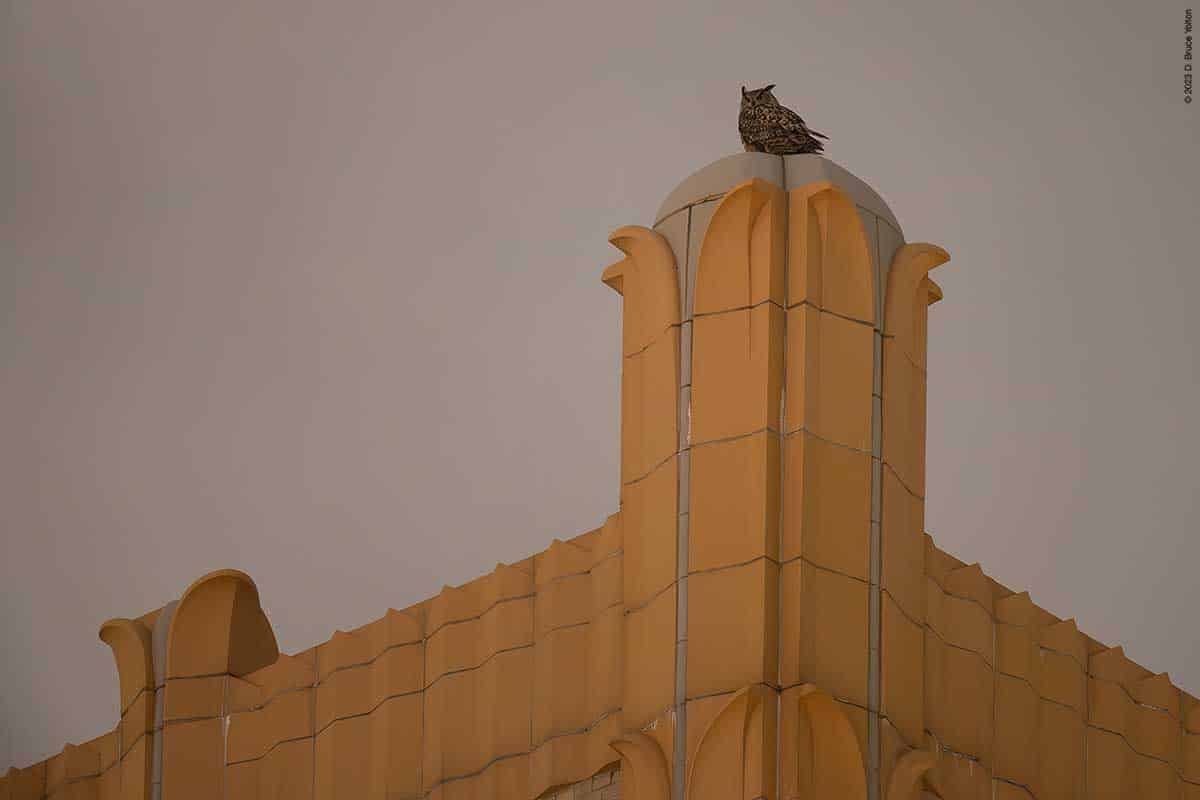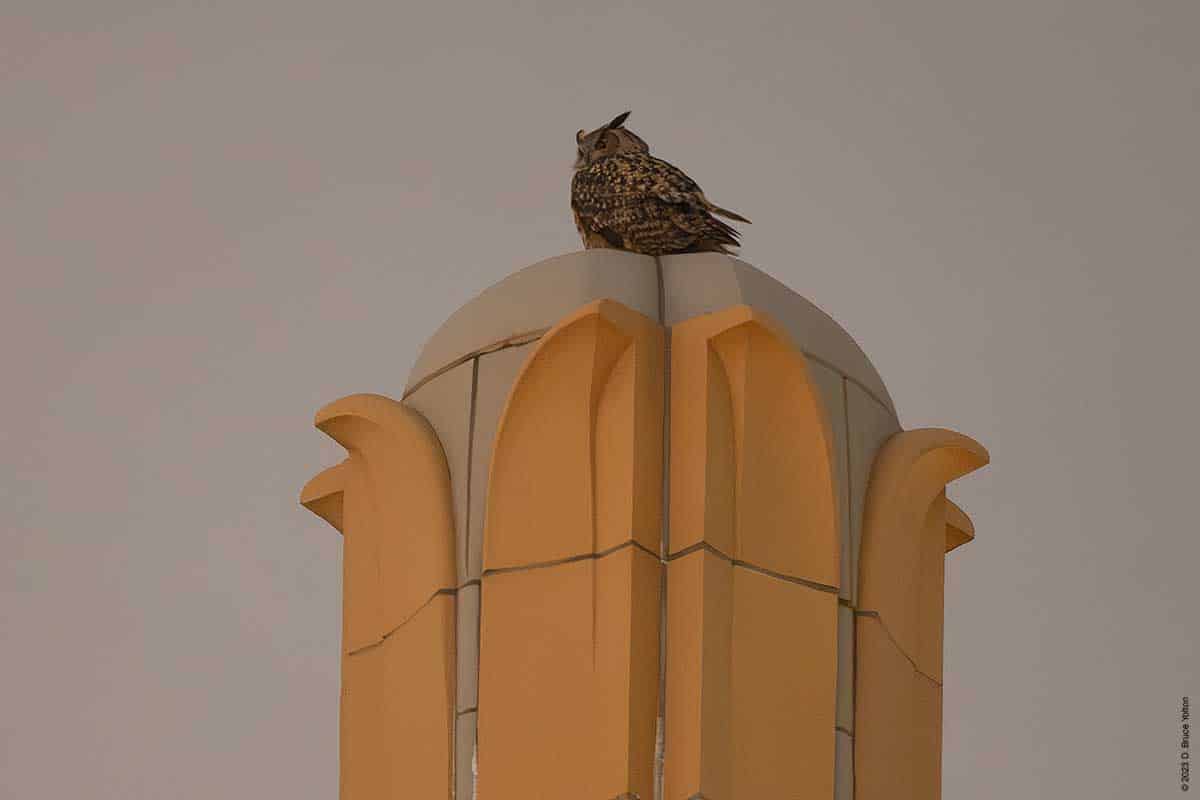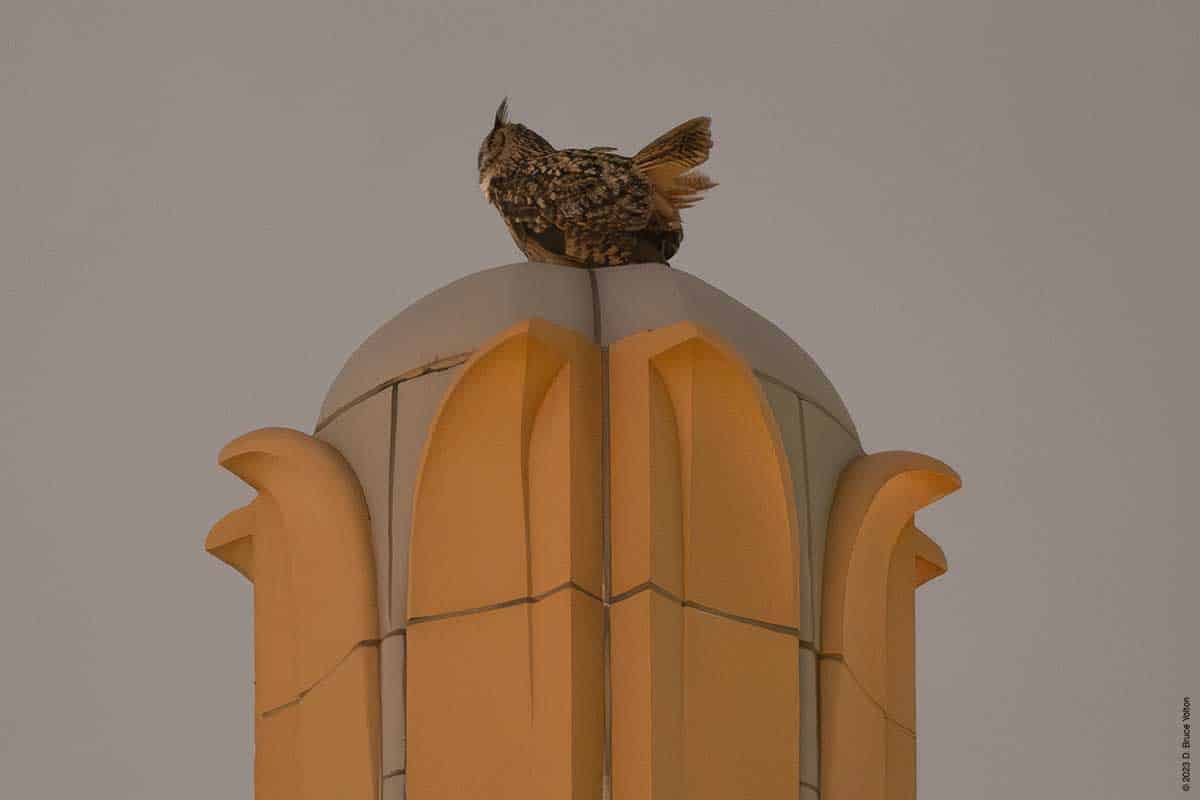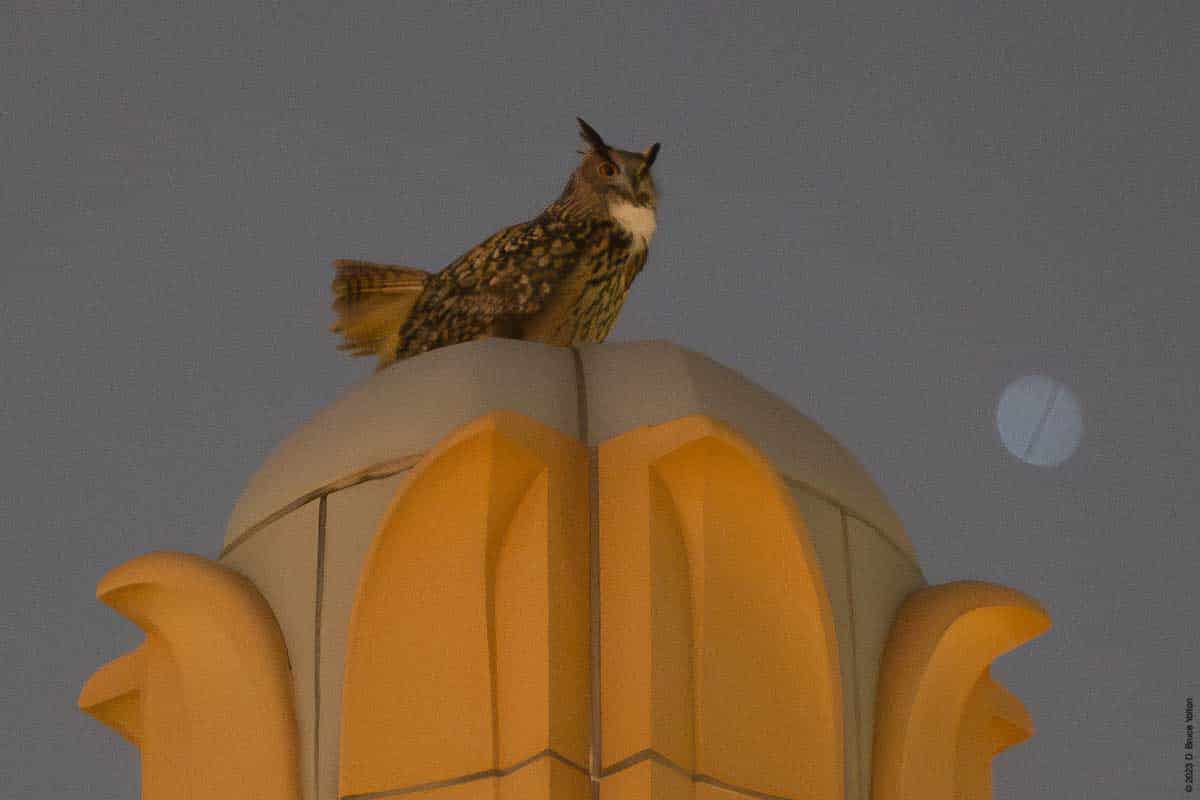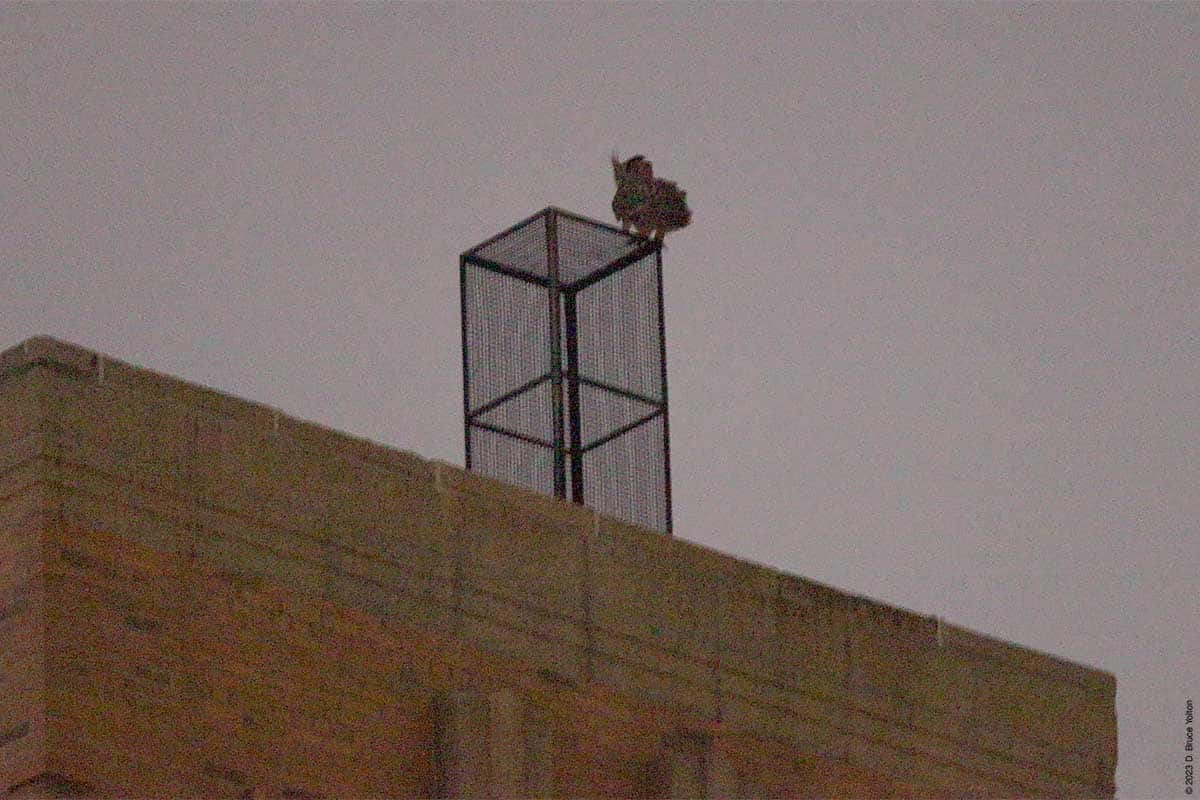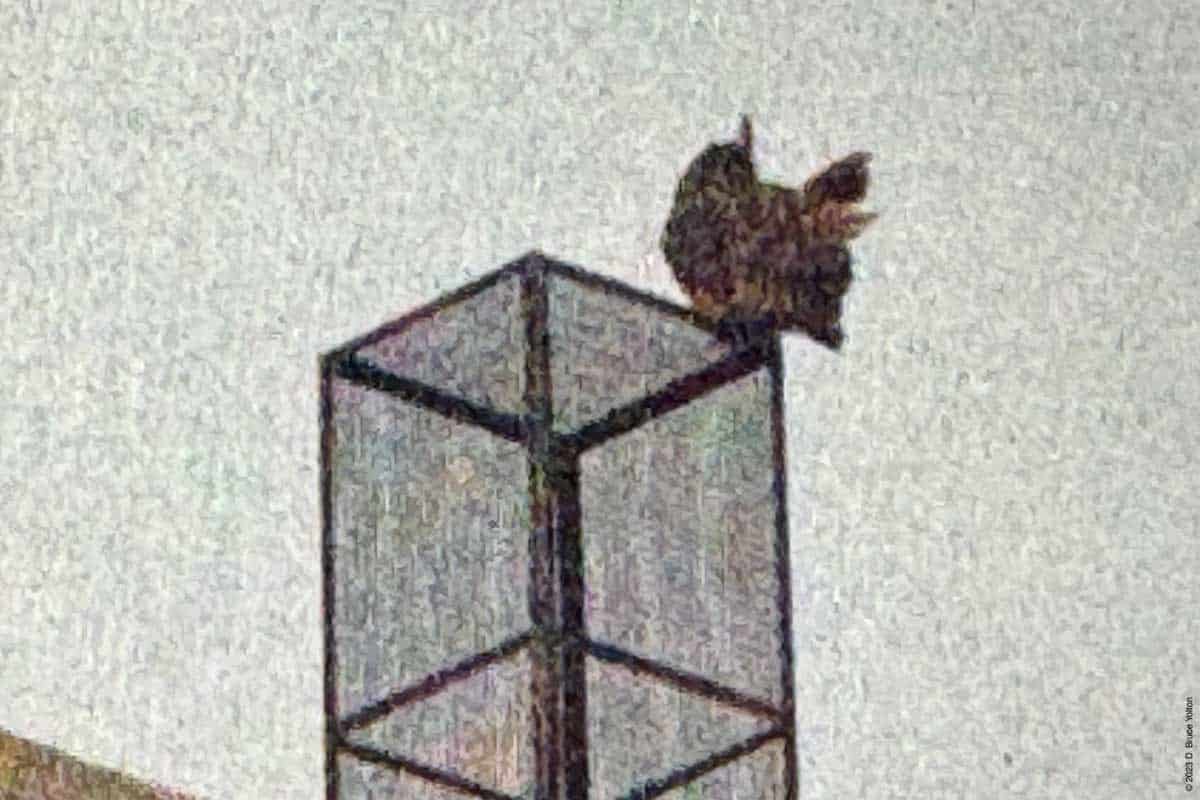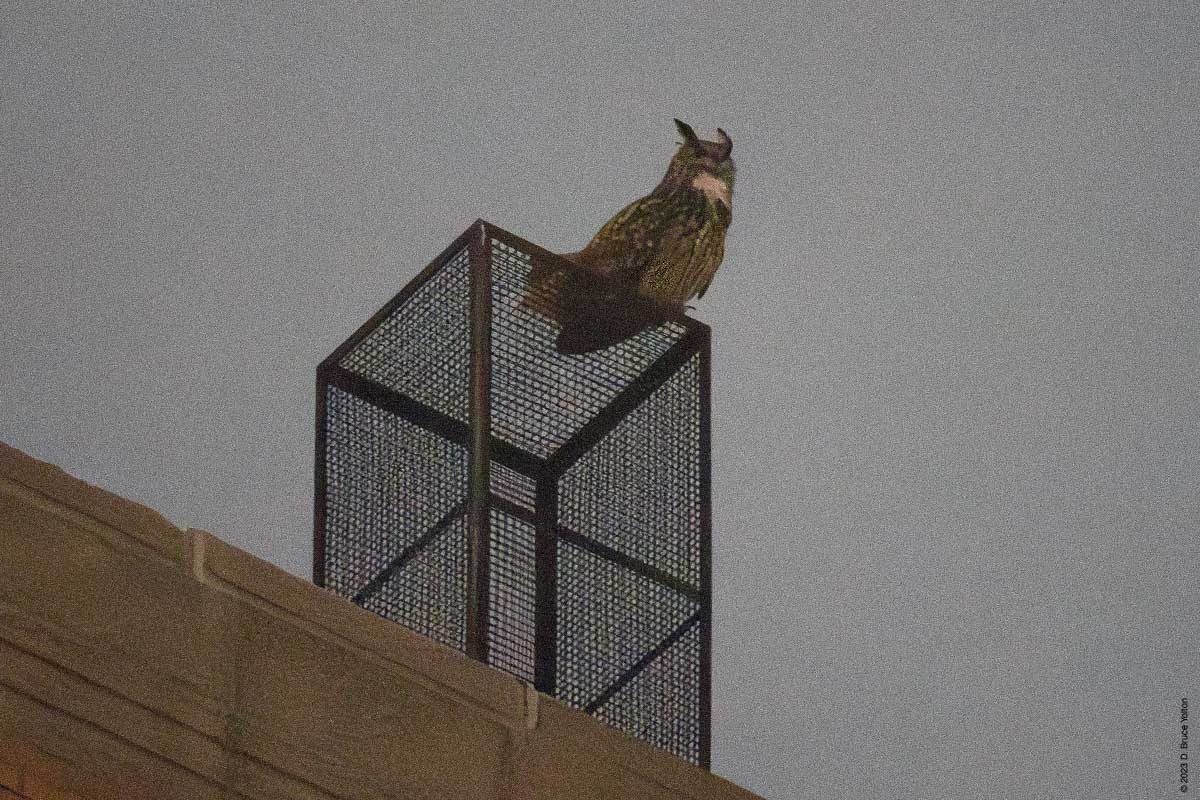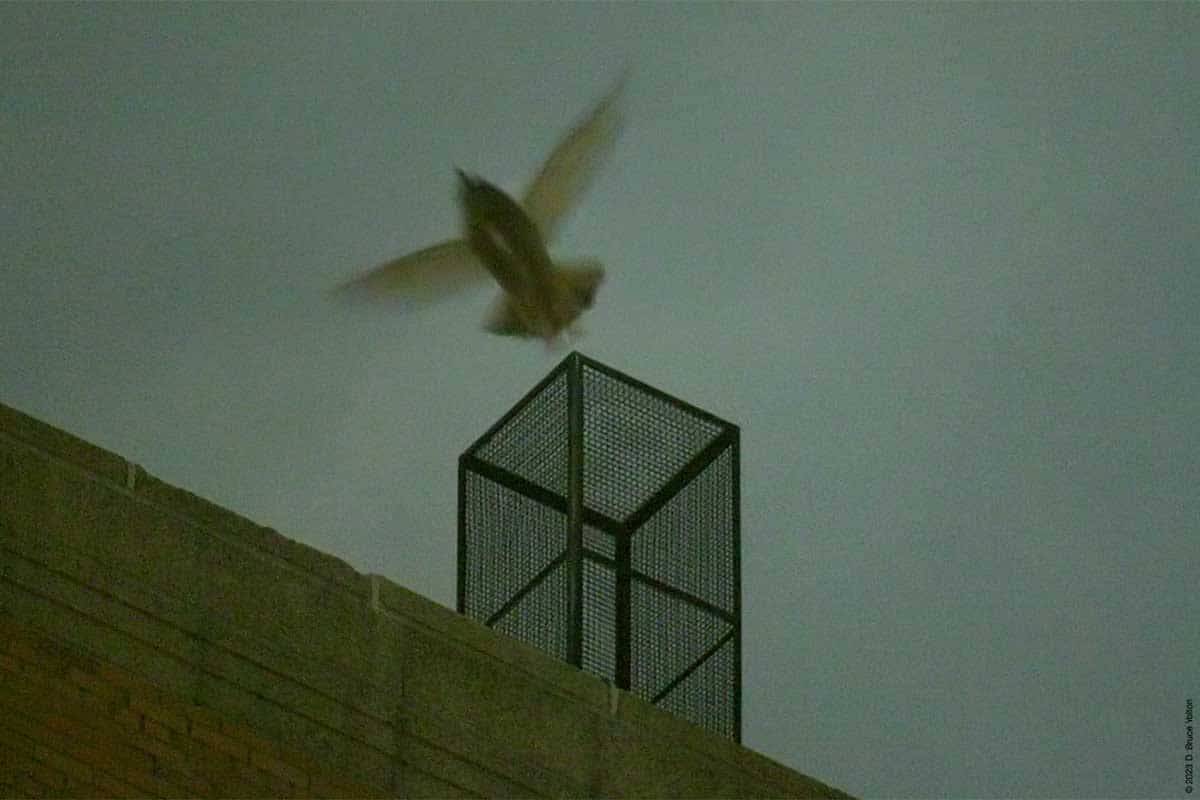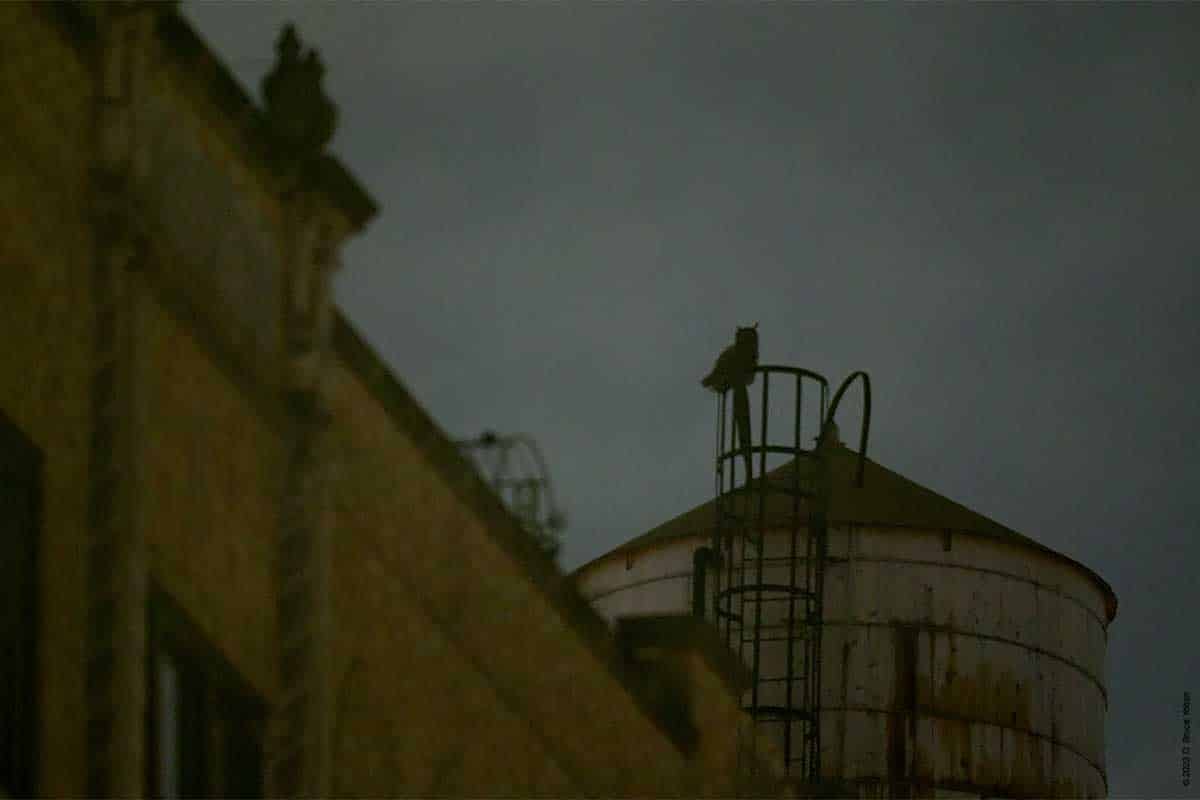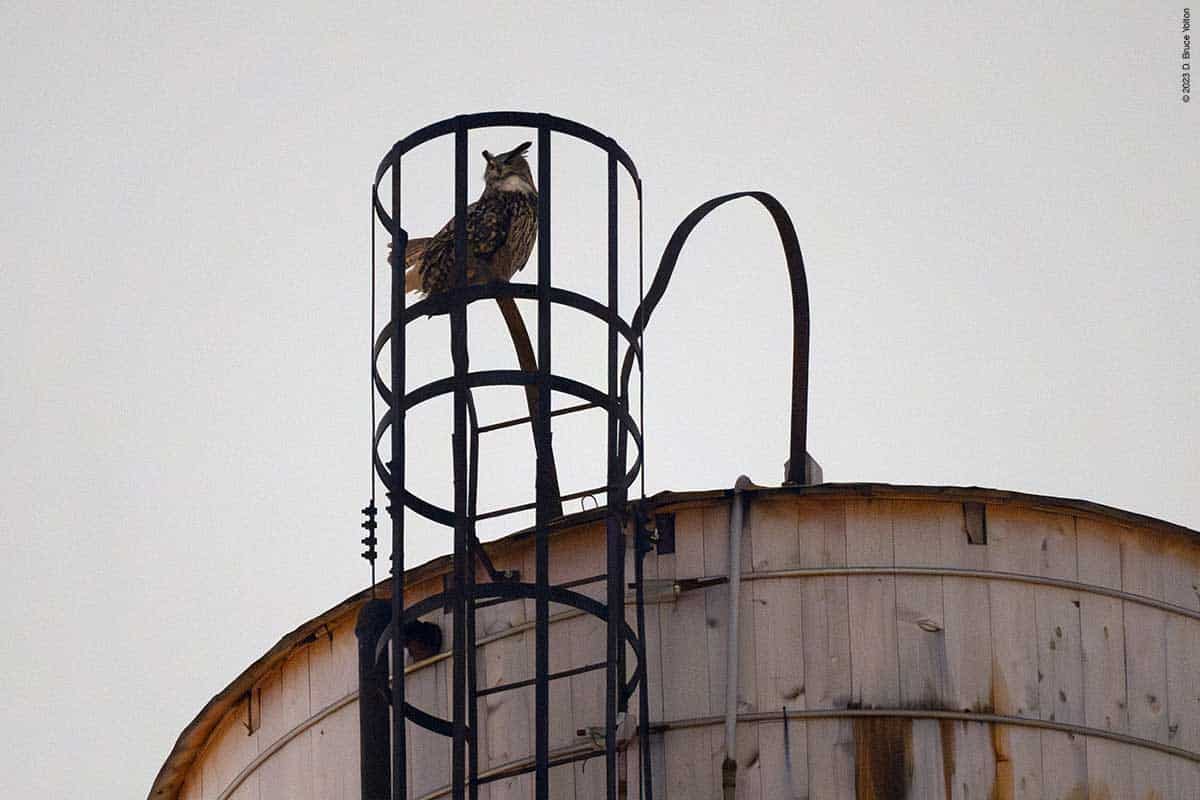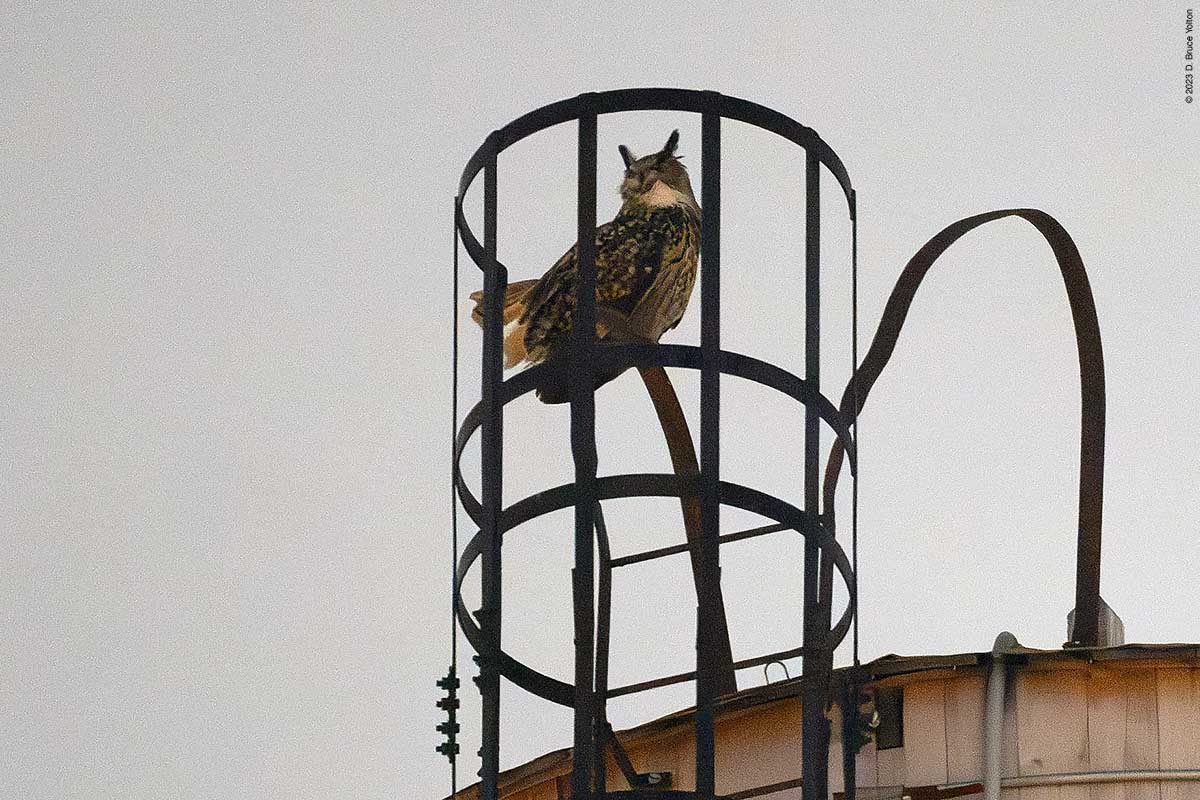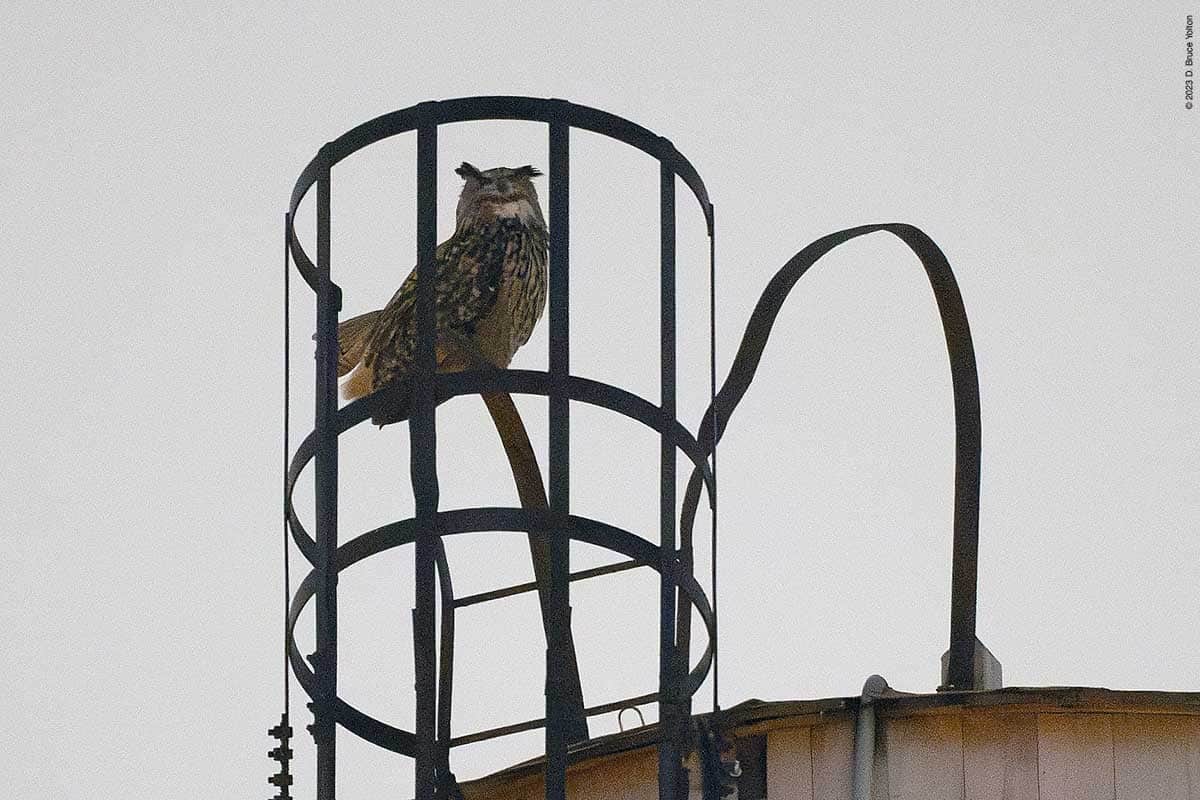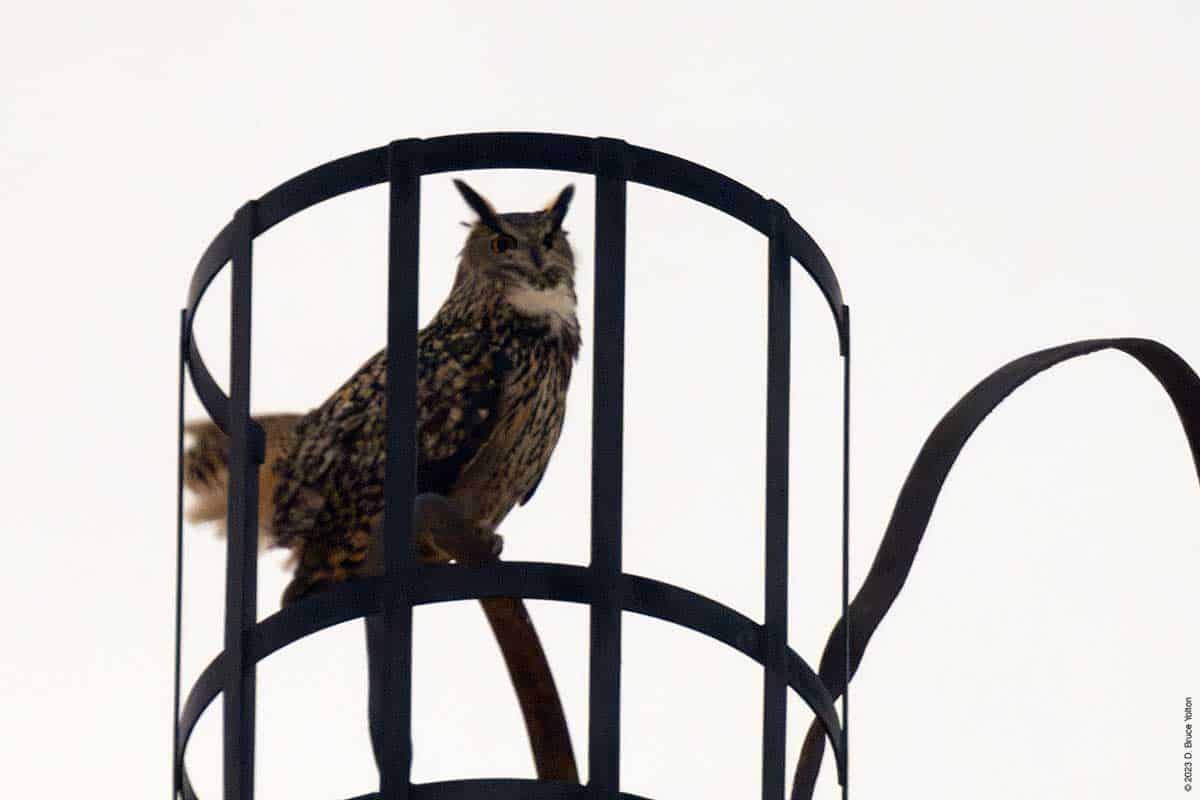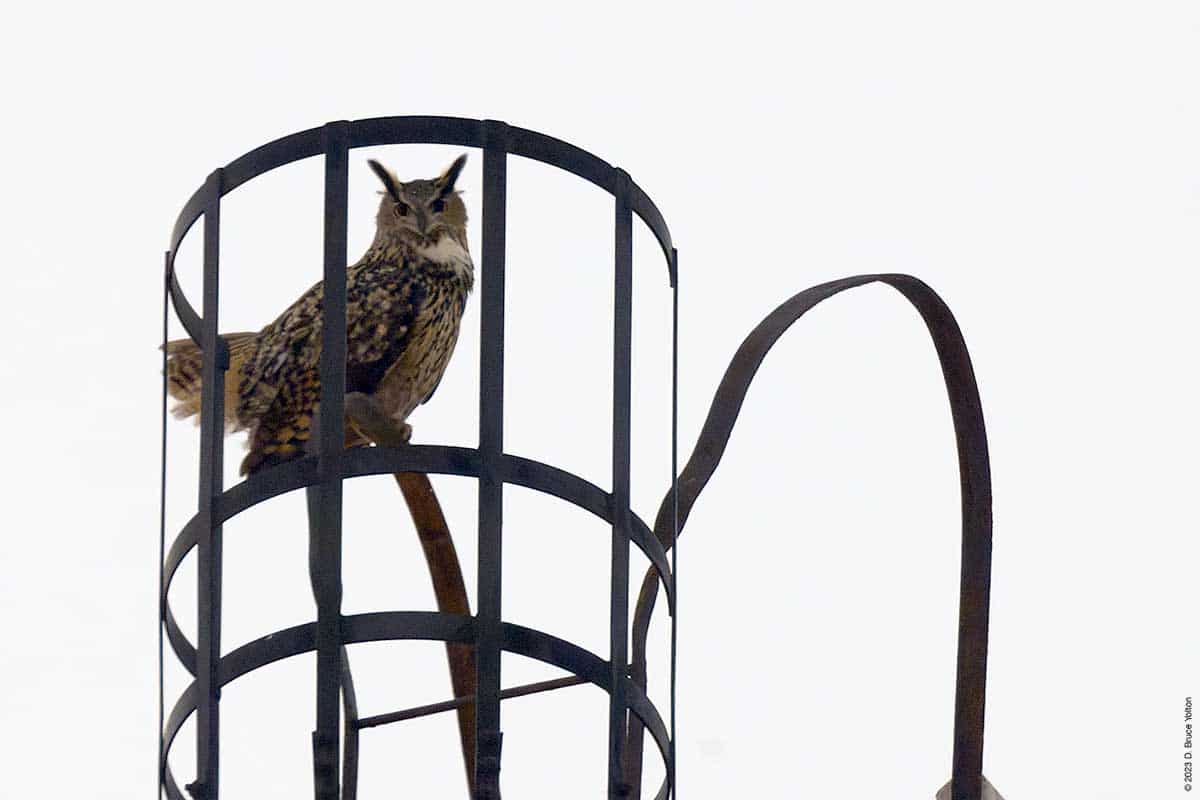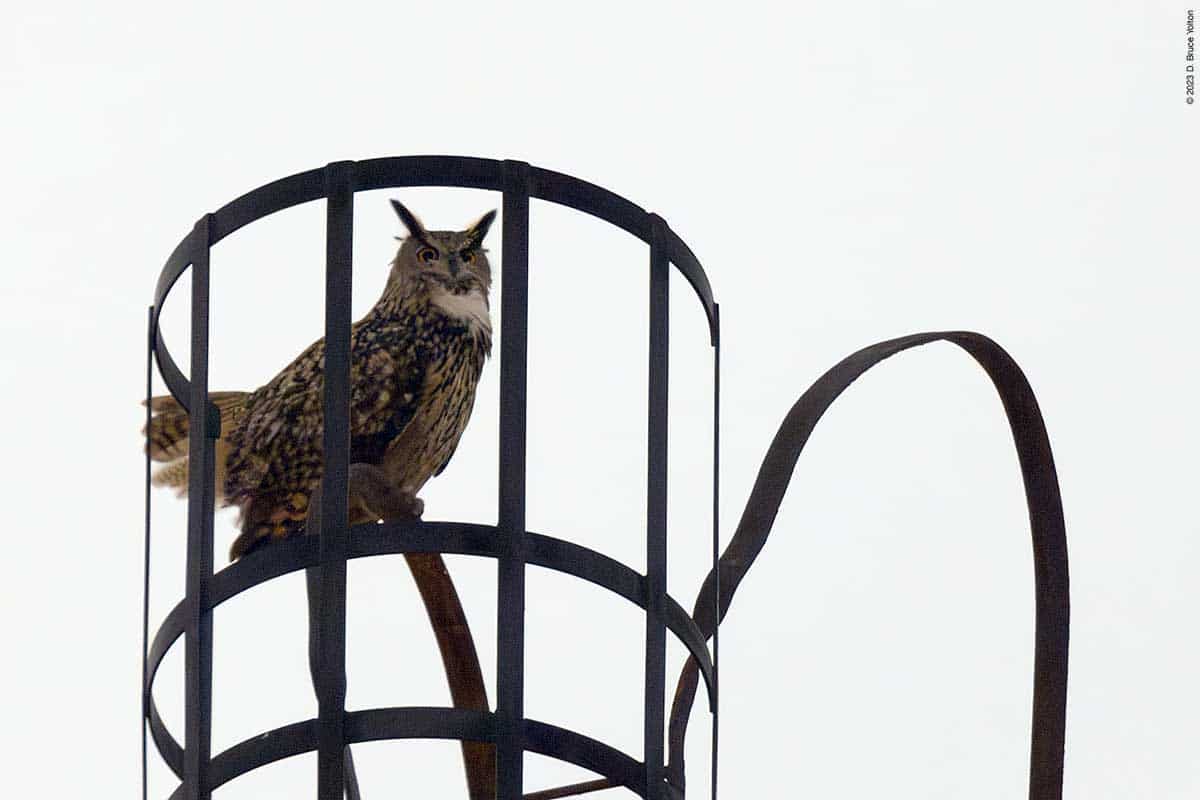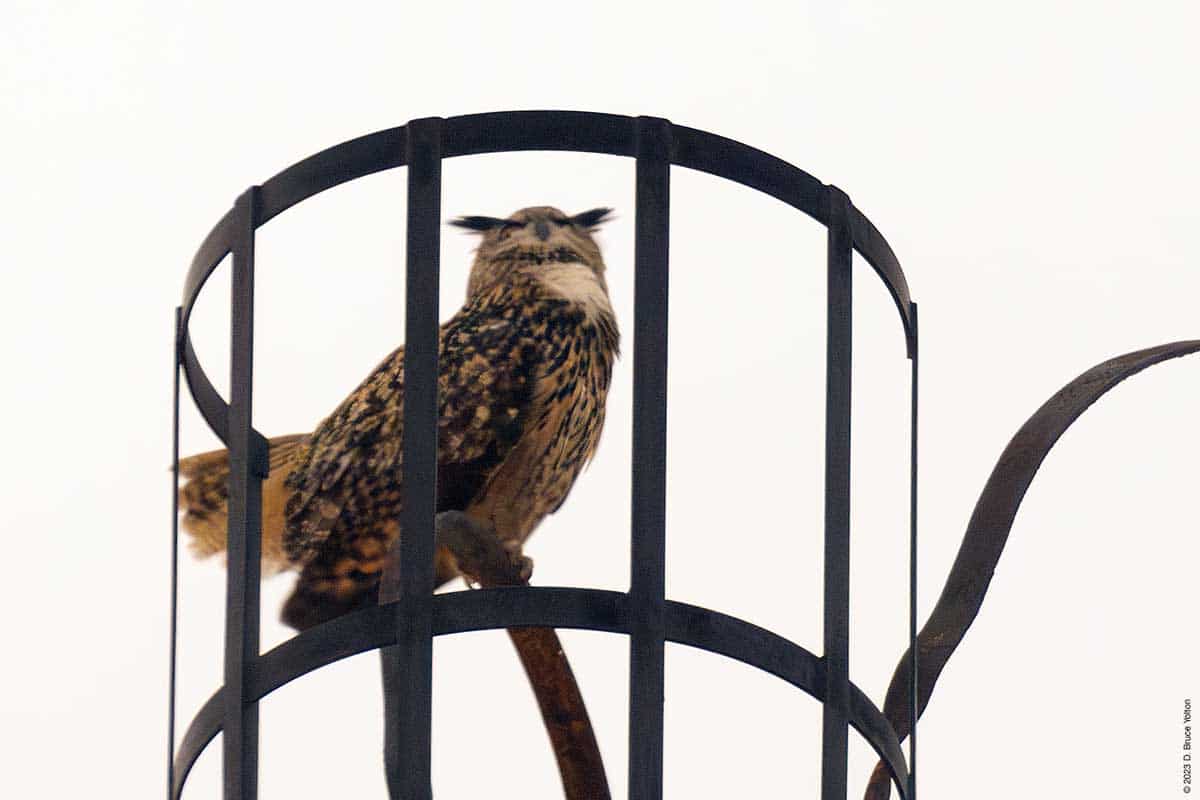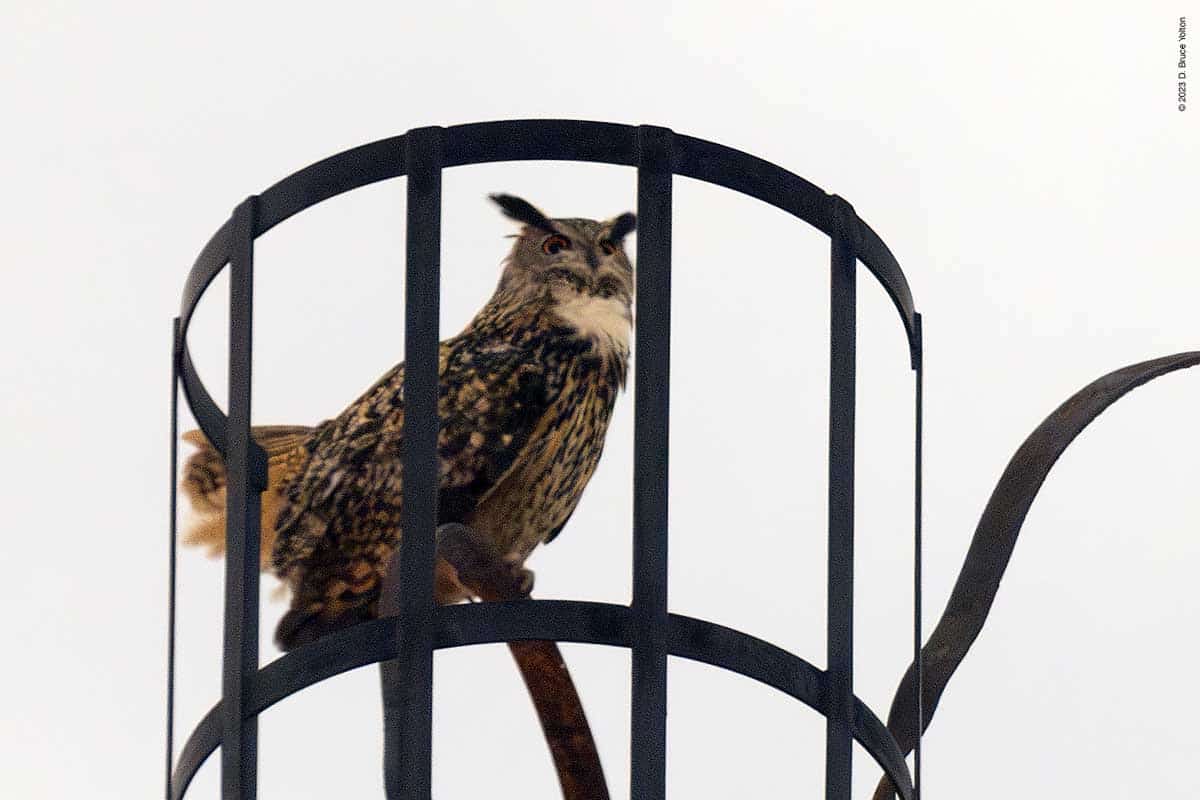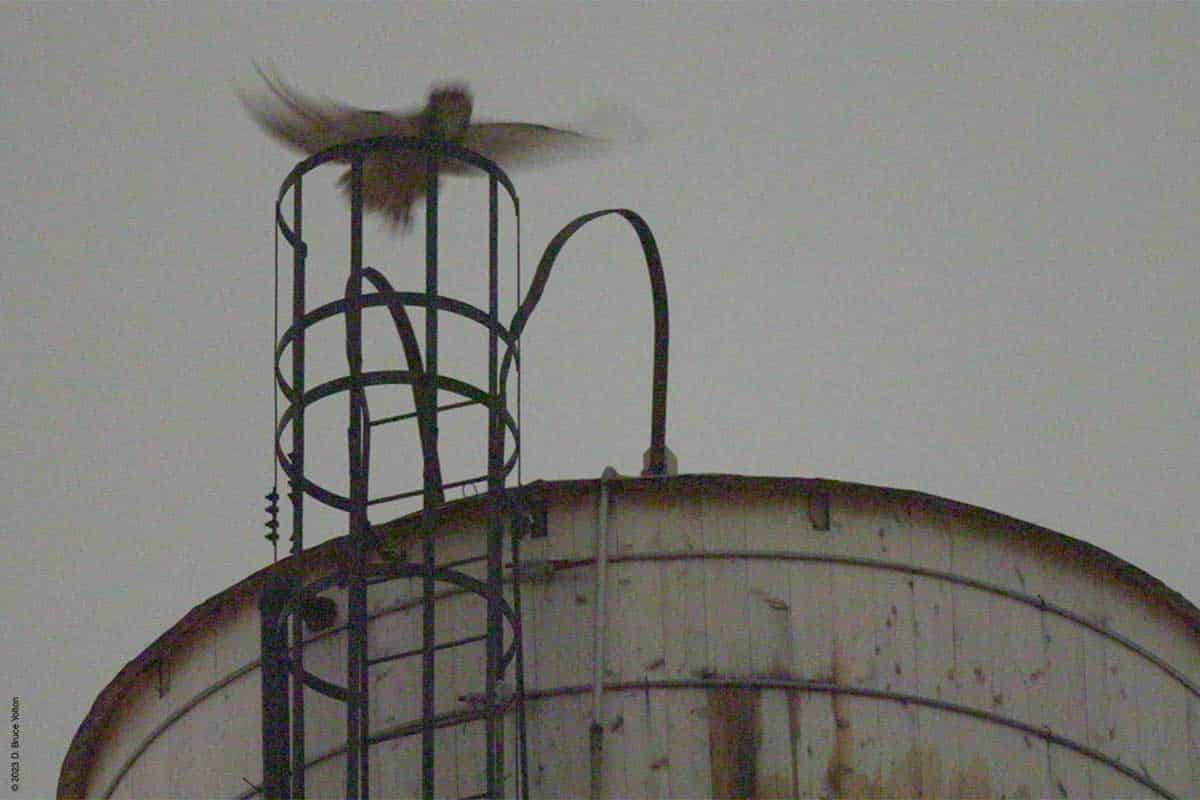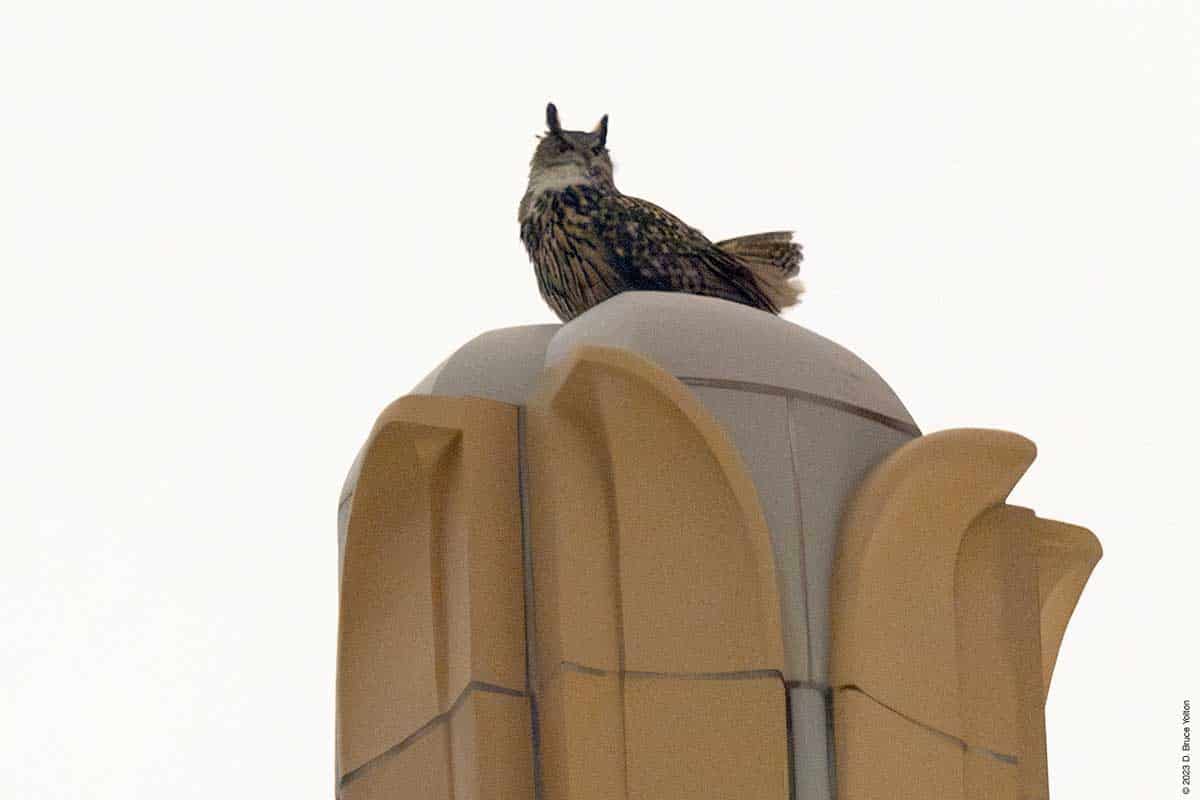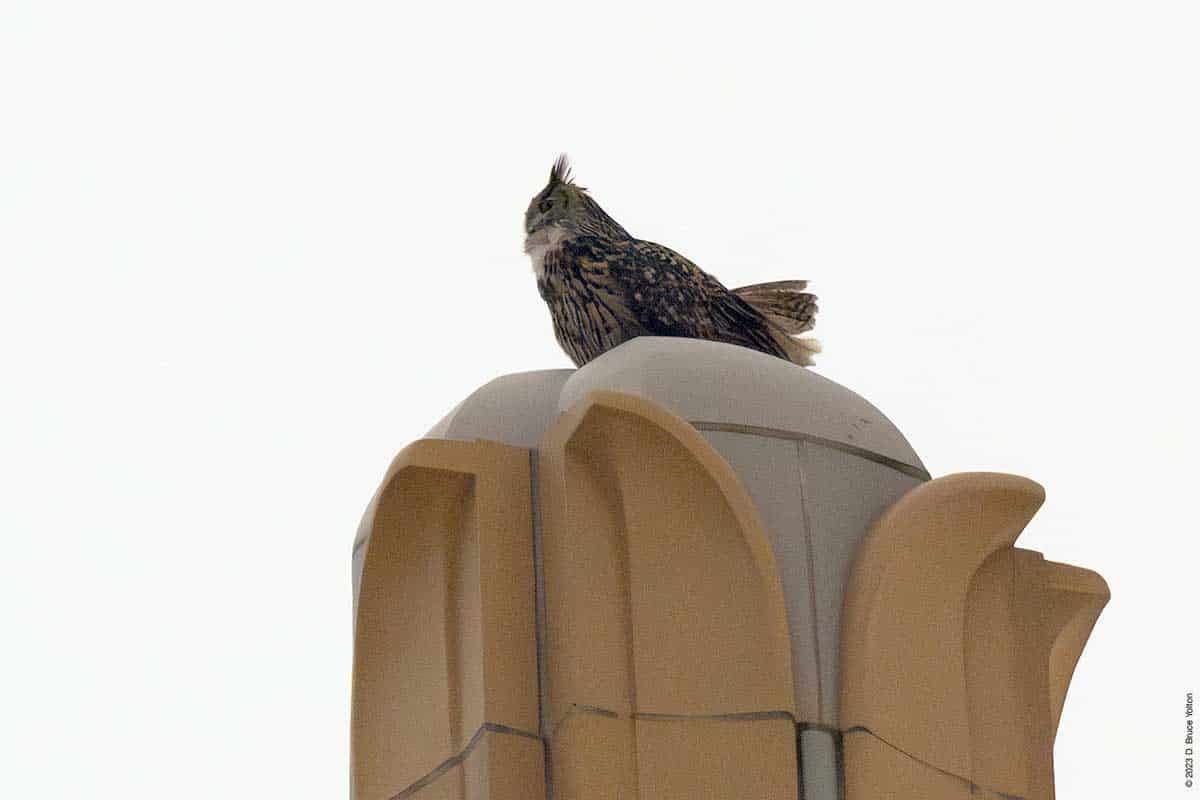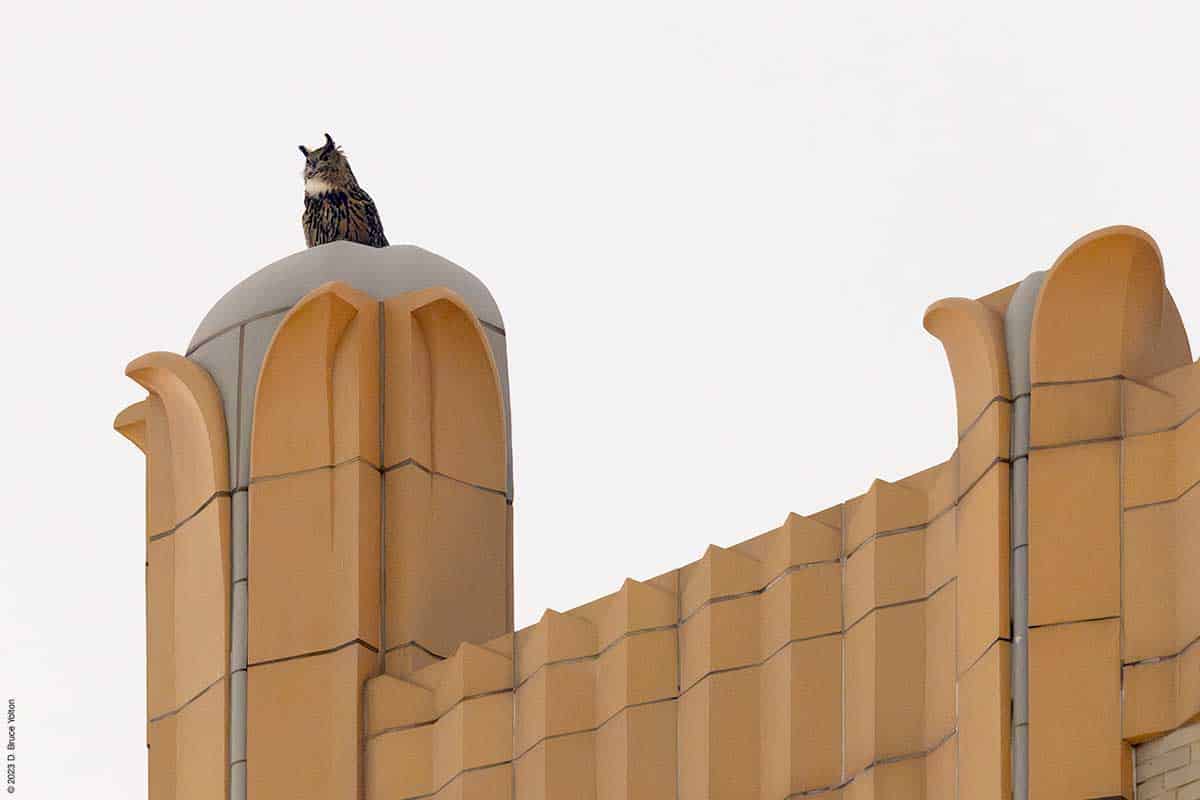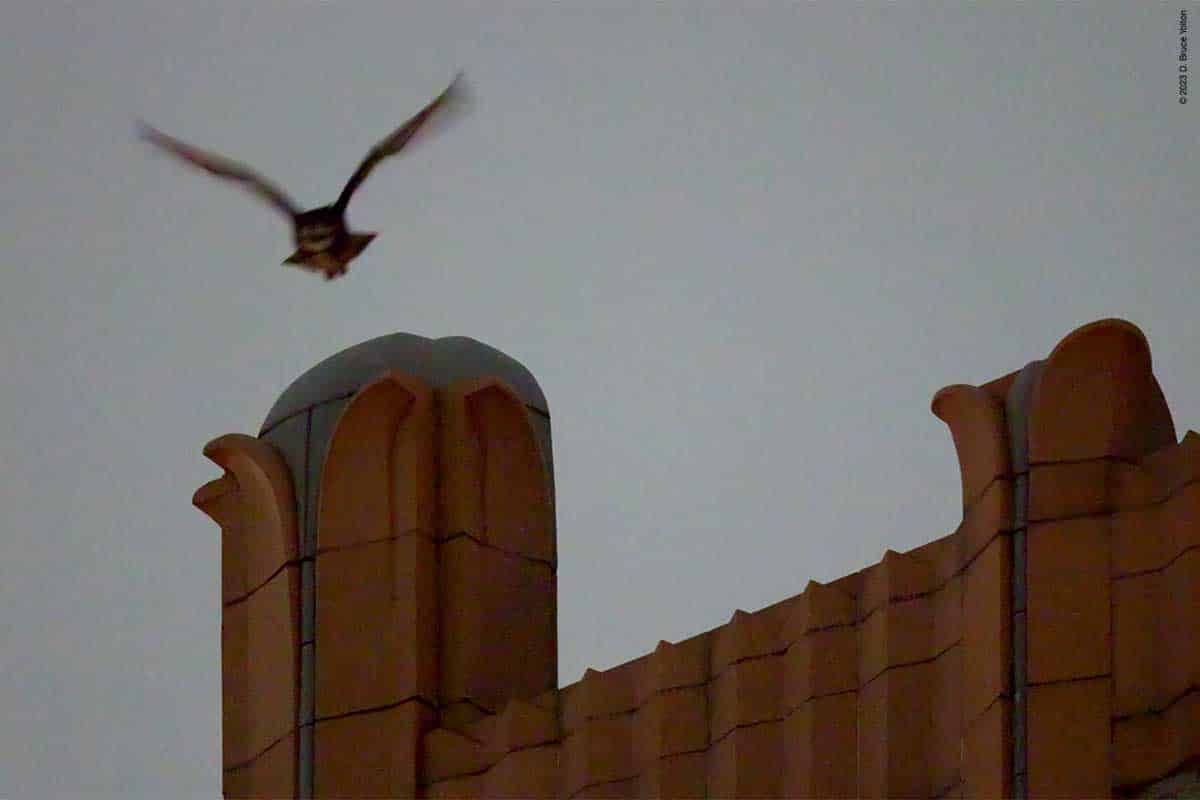Eurasian Eagle-Owl, One Step Ahead of Me
Flaco has been reported lots of places over the last few weeks, and when I follow up on tips, I seem to miss him by a few hours or a day. He’s been on the Asonia at 74th and Broadway, a building at West End Avenue at 85th, and in Central Park at 84th and the West Drive. People have also reported hearing him in the 90’s between Park Avenue and Fifth Avenue.
He’s been close to both an American Kestrel scrape and Peregrine Falcon scrape. This may be because both are in prime locations, or he could be being competitive with them. It will be interesting to see how this develops come spring. Flaco was very aggressive with Central Park’s Red-tailed Hawks this summer.
Despite all of the “bright side” happy news about Flaco, he is an invasive species. He may do some real damage. It will be interesting to see what the NYS DEC does if he interferes with a Peregrine Falcon nest. Peregrine Falcons are a protected species in New York state.
